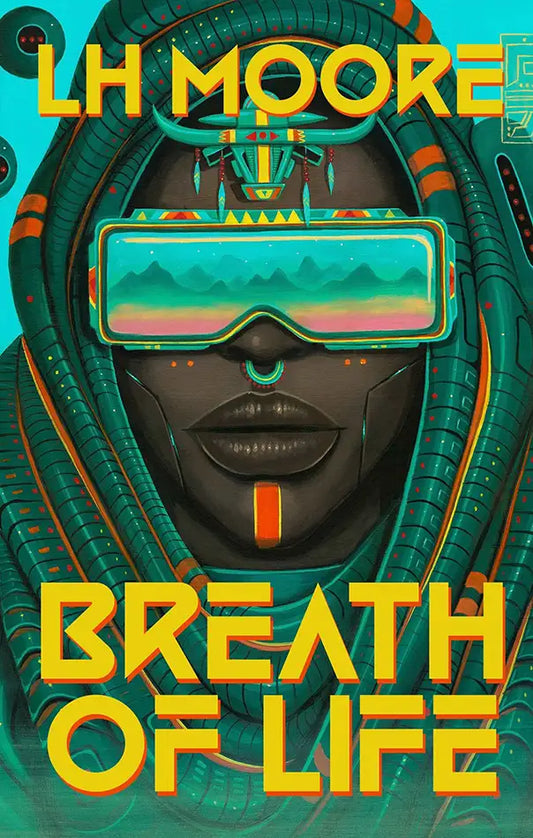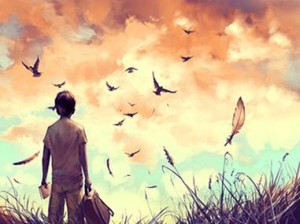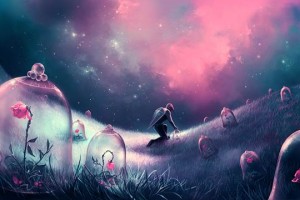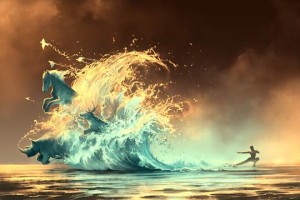
APEX MAGAZINE:Cyril Rolando is a digital artist located in southern France. Although illustration is not his main profession, Cyril’s artistic renderings can easily capture the imagination of any viewer. Completely self–taught, Cyril’s focus is on painting for oneself — based on feelings and expressions, the environment and the beyond.
Hello Cyril! Thanks for having an interview withApex Magazine. Can you tell us a little bit about yourself? How did you come to be an illustrator and digital artist?
CYRIL ROLANDO:Hello! I am 30 years old and I live in the southern France. Actually, I was not really aware of becoming an illustrator/digital artist. When I started to draw, I was 18 and at the same time I started my psychology studies. Many years later, I became a psychologist working in my own practice, and I still draw — it is amazing to think that both disciplines could be complementary. I need art as an outlet to my job, and my career as a psychologist inspires new drawing… this is a wonderful combination.
AM:“After the Rain” is a very hopeful, yet melancholy piece, and one that I think can be interpreted in many different ways depending on the viewer’s outlook. I also saw there was a poem accompanying your artwork. Can you describe what your inspiration was behind this piece of work? Was it in any way a challenging piece to create?
CR:I am glad to know there are a lot of ways to interpret this painting. I don’t think of myself as a ‘surreal’ painter. I try to be ‘uncategorized.’ I always try to describe my art as an ‘otherworldly’ universe and sometimes it works. This painting is based on the French expression: ‘Apré s la pluie vient le beau temps,’ but I am quite sure it exists in English too: ‘After the rain, the sun is shining.’ So, this is really positive. But it speaks about sadness too — crying like a river, or the pain of Nature or… the reflection of the girl’s emotion on the valley or… she looks at the sky/sun like the mountain sees the clouds leaving. Everybody can see what they want, and this is similar to how I work as a psychologist with my patients.
AM:Your art gallery features a beautiful array of bright, vibrant colours in each piece! I really love how you blend tones and use complementary colours to give life and depth to your art. How do you choose your colour palettes? Do you think the digital medium assists in the vibrancy of your work?
CR:Since I began to draw, I think my focus was to understand the interaction between color and emotion. Each emotion can be positive and negative… an excess of joy/bliss is just as detrimental as a lot of wrath. In the same vein, wrath can help to express deep feeling and fear can help to protect you. So, this is the same with the color, I try to find the balance between brightness and darkness. Telling a sad story with a colorful painting is one of my favorite approaches. Of course, Photoshop can help a lot this process, balancing the light/color, and the complementary colors are easy to find by changing the hues with all the tools available!
AM:Your art also features very surreal yet everyday human subject matter.How much of real life inspires you to create your art? How much story do you like to tell in each art piece?
CR:I think all of them speak about my life… except that painting is purely graphic. In other words, all the stories speak about me, even if I often want to prove the contrary. I absolutely can not draw without the painting expressing something. If a drawing is too… empty of meaning, I stop it and I start another. That’s the reason it’s hard for me to draw for someone… I feel quickly uninspired in this case. Finally, I understand that my art is really narcissistic.
AM:I noticed on “After the Rain” that you have amazing step–by–step screen shots of your work, from roughs to completed piece. I think artists and art–lovers alike really enjoy seeing an artist’s process. How did you come upon this drawing process? Is there a lot of trial and error, or do you have it down to a set system?
CR:I love checking out the step–by–step of an artist; it is such magic to see the emergence of a painting. It’s like a birth, and the work in progress can really explain the process.
As for me, there are a lot of levels for each painting: 1–the picture itself; 2–the story; 3–the video of the making–of, with a specific song; 4–the text I wrote as description; and 5–the title of the picture. Each one influences my process and I hope that people understand there are a lot of things I don’t master in the process. I often change my mind about the color, the title, the meaning…
AM:What interests you about illustrating and drawing art for the science fiction, fantasy, and horror genres? Do you have a preference for any particular genre? What do you love drawing the most in these genres?
CR:I don’t think of having a specific interest… I like all these universes only if they support the story I have to draw. I like the old Disney mood, the Hayao Miyazaki worlds, and the absurdity of Tim Burton. They are my roots.
AM:How would you describe your style? How do you feel about your current style?
CR:I can’t describe my style; as I said, I only have the word ‘otherworldly’ to try to… explain I just want to be original or try to be at least… different!
AM:Thank you so much for this enlightening interview! It’s wonderful to see artistic vision blended so seamlessly with psychological insights!












